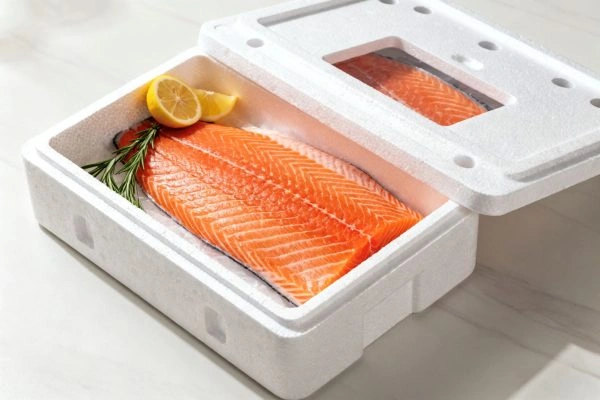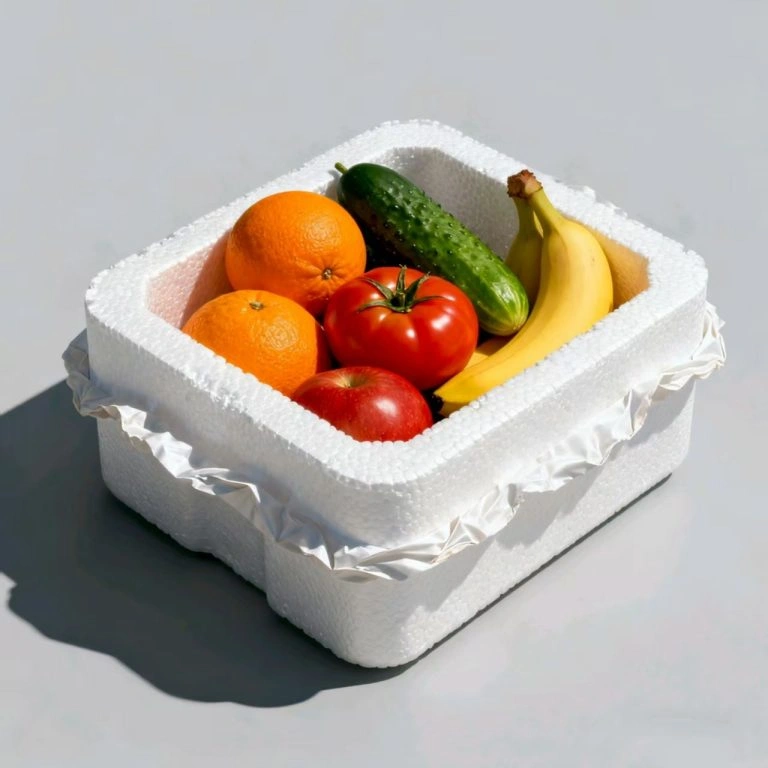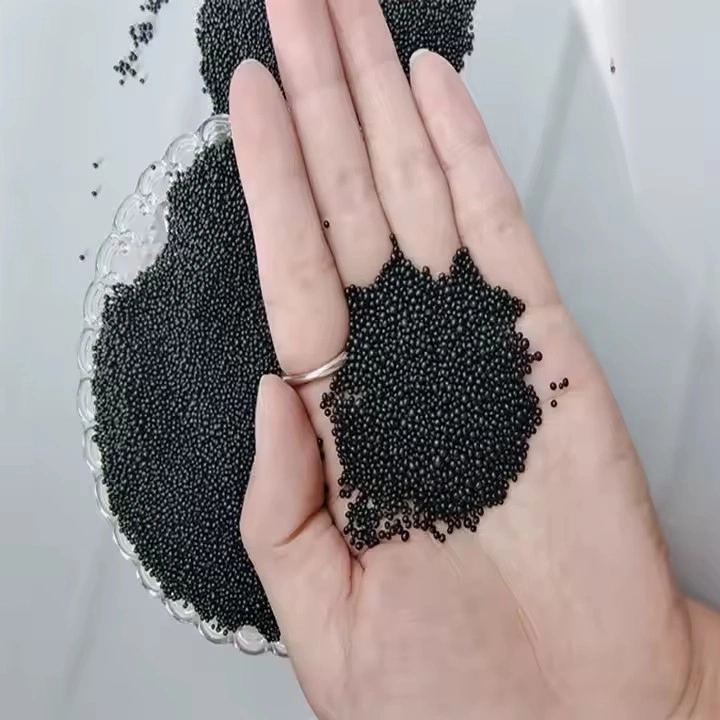EPS molding is a game-changing method that has transformed the packaging world. It creates light, strong, and budget-friendly protective solutions. This process uses expanded polystyrene beads to make custom packaging that fits products perfectly. As businesses seek packaging that offers great protection and is eco-friendly, EPS molding stands out. It delivers top-notch performance while keeping costs low.

EPS Molding and Its Role in Packaging Strength
EPS molding is key to modern packaging. It helps manufacturers craft precise protective systems. These systems keep products safe during shipping, storage, and handling.
What Is EPS Molding and How It Works
EPS molding turns expandable polystyrene beads into molded packaging parts. It uses controlled heat and expansion. The process starts with pre-expansion. Beads reach a uniform size and flow well. This ensures smooth processing. During molding, steam makes the beads expand more and stick together. This forms a solid yet light structure with great cushioning.
The process is precise. It allows packaging to match exact product sizes and protection needs. Quick demoulding on automatic machines and high vacuum cooling ensure fast production. The result is consistent quality.
Key Features of Molded EPS in Packaging
Molded EPS packaging has unique traits. These make it ideal for protection. It has strong fusion and high impact resistance. This means it can handle heavy stress without losing its protective power. The cellular structure absorbs energy well. It spreads impact forces across the surface.
The surface is smooth and stays the same size. It is strong and works for many uses. The product resists shrinking or deforming. This makes it perfect for precise sizing and long-term stability.
Benefits of EPS Over Traditional Packaging Materials
EPS molding has clear advantages over materials like cardboard, wood, or other foams. Its great strength-to-weight ratio offers top protection with less weight. This cuts shipping costs and environmental impact. Low energy use and less steam in production make it cost-effective.
Unlike stiff materials that may break, EPS absorbs and spreads impact energy. This keeps products safe. It also resists moisture and chemicals. This ensures products stay intact in various conditions.
Factors That Make EPS-Molded Packaging Strong
The strength of EPS-molded packaging comes from several linked factors. These work together to provide excellent protection.
Structural Strength and Impact Resistance
The cellular structure of molded EPS forms a network of air pockets. These give strong structural support while staying flexible under stress.
Shock Absorption Abilities
EPS packaging is great at absorbing shocks. Its cellular design has air-filled cells. These compress slowly during impact. They absorb energy and stop it from reaching the product. This allows EPS to handle repeated impacts without permanent damage. It keeps protecting throughout a product’s life.
EPS recovers from compression. This ensures it stays protective even after many handling events. It is ideal for products with long shipping or storage times.
Compression Strength and Load-Bearing Power
EPS has high strength and stable size. It supports heavy loads for stacking and storage. It can handle vertical weight without losing protection. This makes it great for warehouse storage and transport where space matters.
Thermal Insulation and Environmental Stability
EPS packaging offers excellent thermal insulation. It protects temperature-sensitive products. It also stays strong in different conditions.
Performance Across Temperature Changes
The closed-cell structure of EPS resists temperature changes. It performs well in hot warehouses or cold distribution centers. This keeps packaging protective in various settings.
Moisture Resistance and Long-Lasting Strength
EPS resists moisture due to its closed-cell structure. This prevents water absorption that could weaken it. This resistance ensures long-lasting strength. Packaging stays protective in humid environments or during long storage.
Uses of High-Performance EPS Packaging in Industries
EPS molding’s versatility makes it fit for many industries. Each has specific protection needs.
Electronics and Fragile Goods Protection
EPS is perfect for electrical appliances and ceramic packaging. It protects against mechanical shock and static discharge. EPS can include antistatic features for sensitive electronics. It also cushions against physical damage.
Complex molding shapes securely hold odd-shaped components. This ensures safe shipping and handling.

Pharmaceutical and Medical Supply Transport
The pharmaceutical industry needs packaging that keeps products safe and meets strict rules. EPS is great for precision instrument packaging. It maintains size stability and cleanliness for medical use.
Temperature-sensitive drugs and devices need thermal insulation. EPS protects against physical damage during transport and storage.
Food & Beverage Cold Chain Logistics
EPS is ideal for fruit and vegetable boxes in the food industry. Its thermal insulation and moisture resistance keep products fresh. It maintains temperature stability in cold chain logistics.
EPS for food meets safety standards. It provides cushioning and thermal protection for delicate or temperature-sensitive foods.
HUASHENG: A Reliable Supplier of Advanced EPS Materials
HUASHENG is a top manufacturer of specialized EPS materials. It offers complete solutions for various packaging needs. The company uses advanced production and innovative material designs.
Product Grades Offered by HUASHENG
HUASHENG provides a wide range of product grades. Each is designed for specific uses to maximize performance.
Common Grade for General Packaging Needs
E-standard material is a common EPS. It works with automatic vacuum forming machines, electric drive forming machines, and traditional hydraulic presses. This grade is reliable and cost-effective for standard packaging.
P-extra light material is another common EPS. It suits automatic vacuum forming machines, hydraulic presses, and large plate machines. It offers great expandability for ultra-light packaging.
Flame Retardant Grade for Safety-Sensitive Applications
F-flame retardant grade has UL certification (document number E360952). It meets strict safety standards for fire-resistant packaging. This is key for electronics and industrial uses where fire safety matters.
FSH-European standard flame retardant grade is used for thermal insulation in construction and industry. It meets European safety standards for passive room insulation.
Graphite Grade for Enhanced Thermal Insulation
FGE-graphite polystyrene (suspension method) is used for thermal insulation in construction and industry. Graphite is added during polymer synthesis. This boosts thermal performance for temperature-critical uses.
S-33 adds natural flake graphite via extrusion. It offers top thermal insulation for precise temperature control needs.
Environmental Protection Grade for Sustainable Solutions
HUASHENG uses non-HBCD flame retardants. These meet EU REACH and ROHS standards. FHE-N-HBCD flame retardant grade offers fire resistance while being eco-friendly.
These formulations support sustainability without sacrificing performance or safety.
Carbon Black Grade for UV Resistance and Strength
Black polystyrene FGE material (suspension method) suits electrical structural parts and special black products. Carbon black adds UV resistance and better structural strength. This is great for outdoor use or products needing long exposure resistance.
Adding carbon black during polymer synthesis improves aging resistance and visual appeal for specific uses.
Customized REPS Solutions Tailored to Client Needs
HUASHENG develops custom solutions based on client needs. Its research and development create tailored formulations. These meet specific performance, regulatory, and cost requirements.
The company’s expertise allows it to adjust material properties. This includes density, thermal traits, and strength to match exact needs.

Conclusion
EPS molding is a vital technology in high-performance packaging. It offers top protection through smart material science and precise manufacturing. Its great shock absorption, thermal insulation, and structural strength make it ideal for protecting valuable products across industries. HUASHENG’s wide range of specialized EPS materials ensures manufacturers get the exact properties they need. This includes flame resistance for safety, thermal performance for sensitive products, or eco-friendly solutions for sustainability. As packaging needs grow, EPS molding stays a leader. It gives manufacturers tools to protect products while meeting cost and environmental goals.
FAQs
Q1: What makes molded EPS stronger than other packaging materials?
A: Molded EPS is strong due to its unique cellular structure. It absorbs shocks and resists impacts well. The material compresses and recovers under stress. It also resists moisture and stays stable in size. This ensures consistent protection over time. The fusion bonding in molding spreads stress evenly. This prevents weak spots common in other materials.
Q2: Is molded EPS eco-friendly?
A: Modern molded EPS is recyclable and uses less material due to its light weight. HUASHENG’s environmental protection grades use non-HBCD flame retardants. These meet EU REACH and ROHS standards. The material’s strength reduces replacement needs. This cuts waste over the product’s life.
Q3: Can HUASHENG provide custom EPS solutions for specific industries?
A: Yes, HUASHENG offers tailored solutions through research and development. Its wide product range includes grades for electronics, pharmaceuticals, food packaging, and construction. The company can adjust properties like flame resistance, thermal conductivity, and strength. This meets specific industry needs and regulations.






